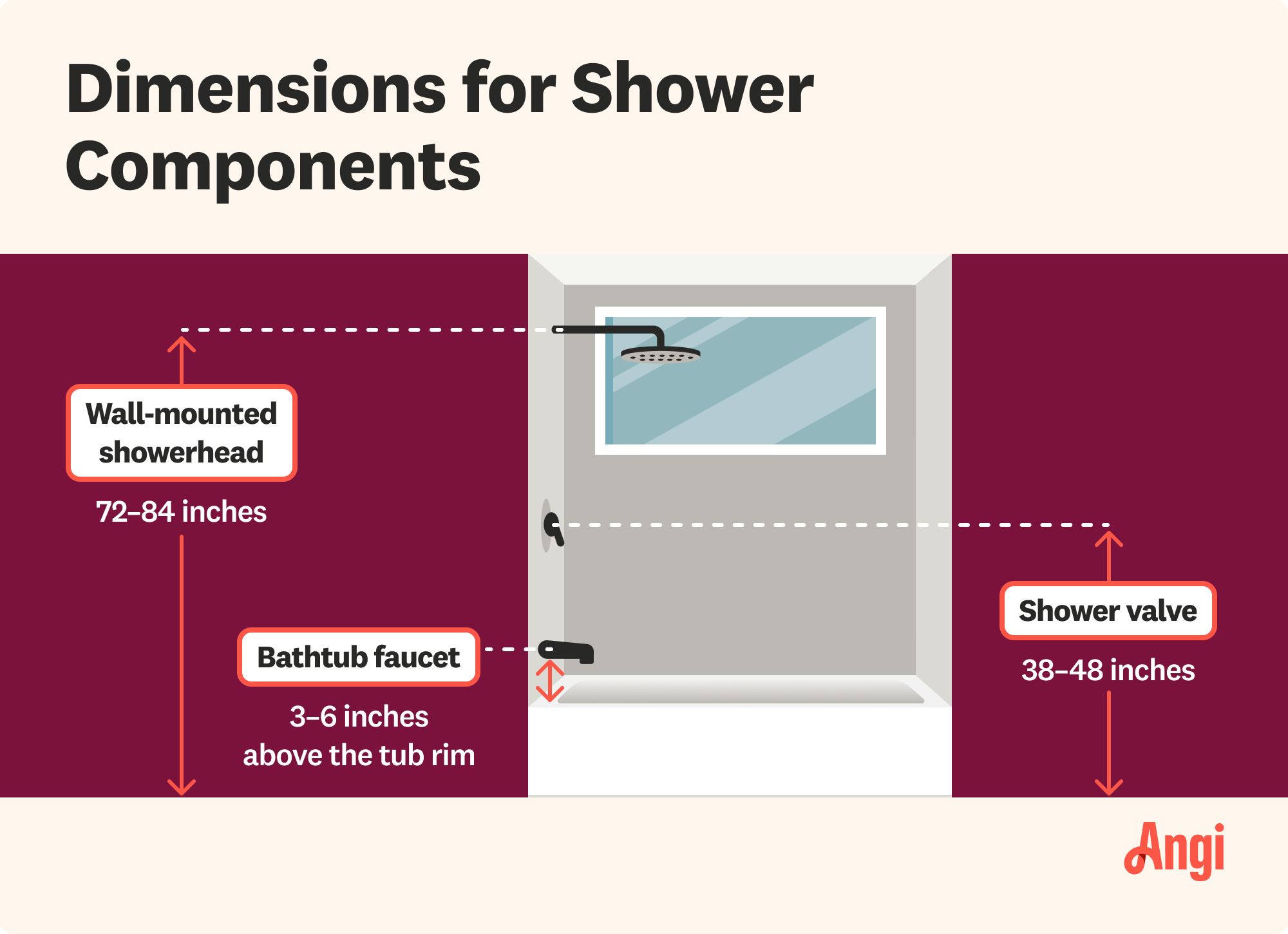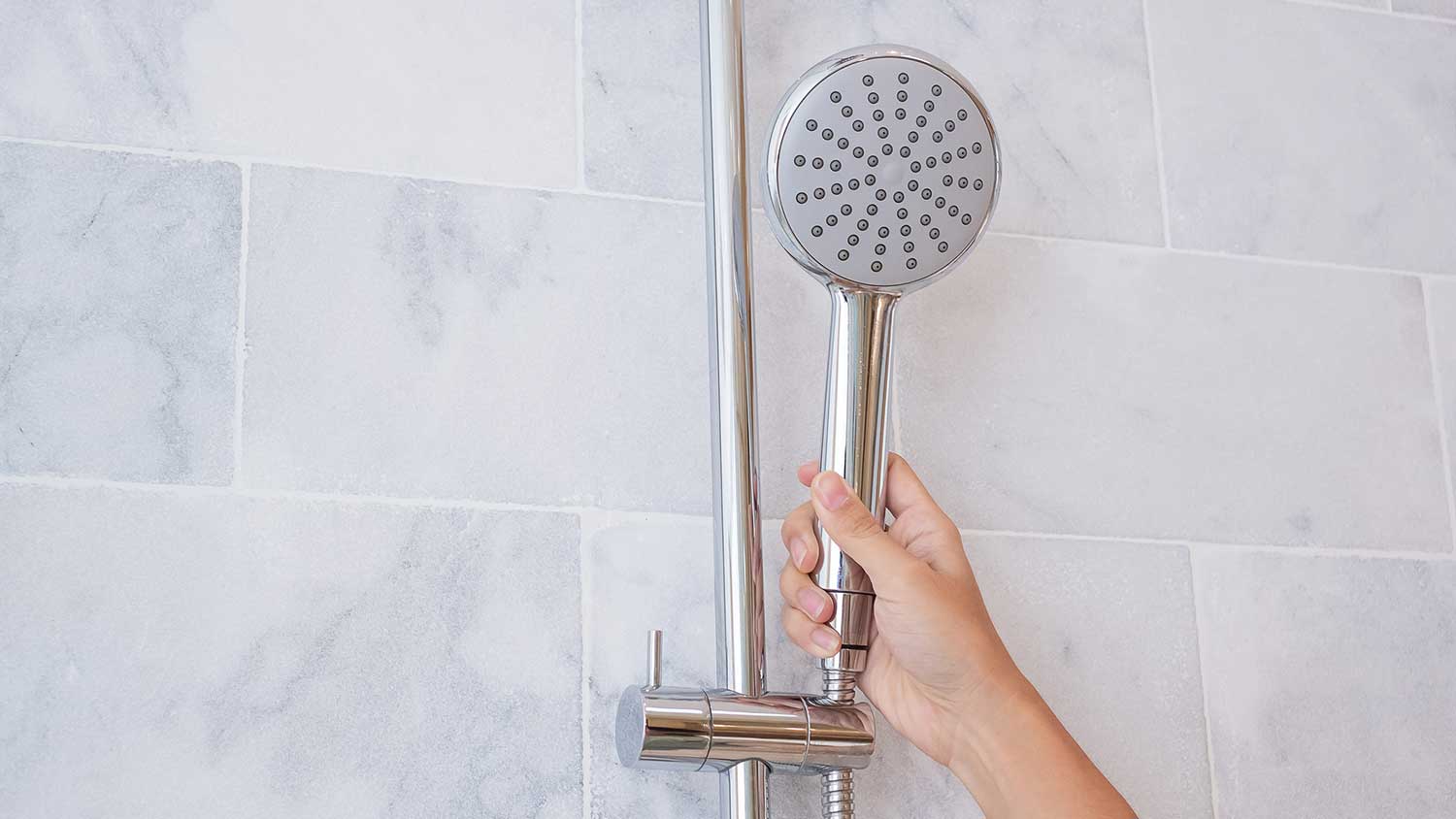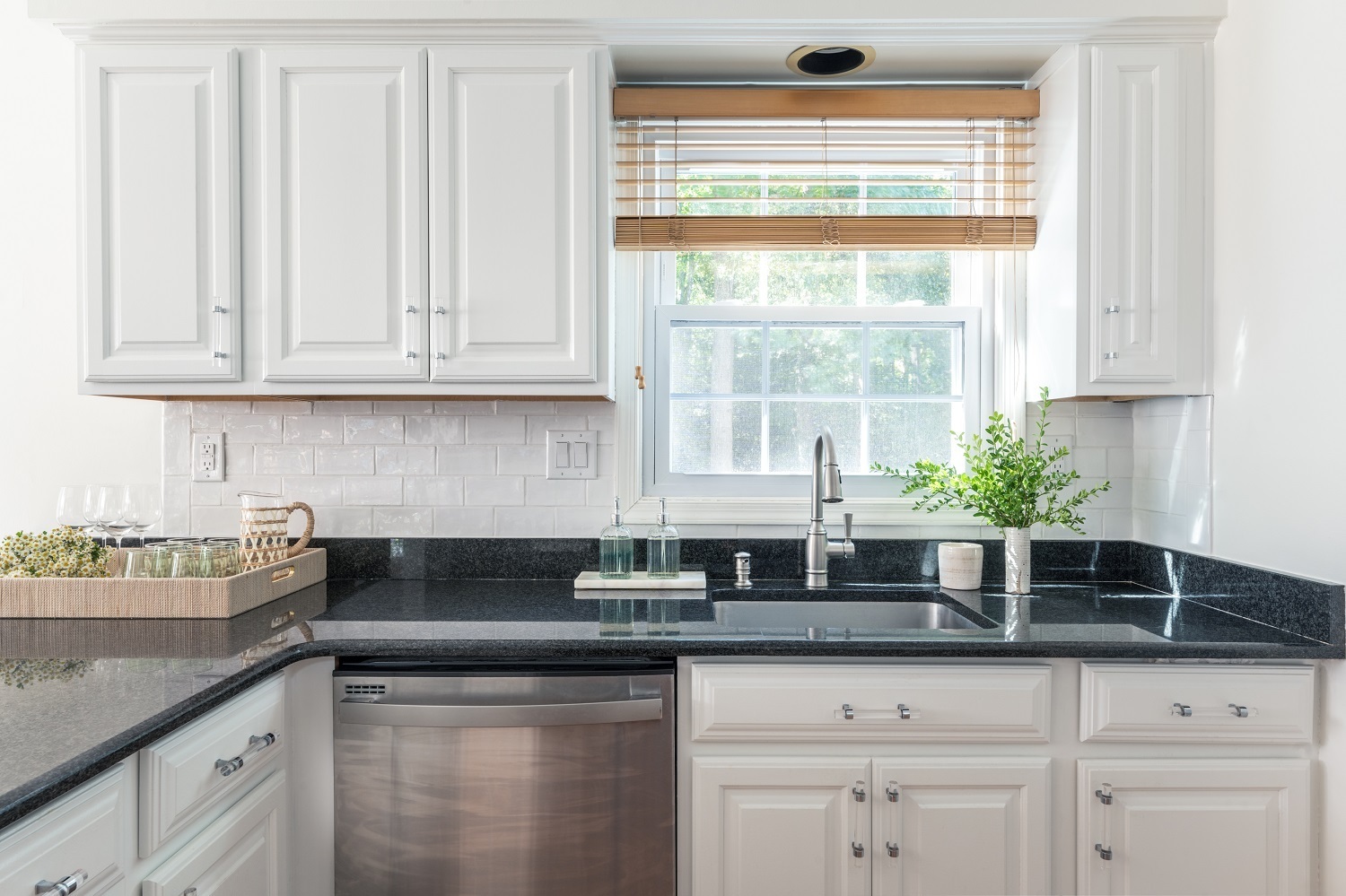What Is the Ideal Showerhead Height?
Get the lowdown on just how high to mount your showerhead


A standard showerhead is installed 80 inches above the shower floor.
The height of a showerhead commonly ranges from 72 to 84 inches.
Rain showerheads are mounted higher than standard showerheads at 80 to 90 inches.
Showerhead height depends on the type of showerhead and the height of the user.
When working on your home’s plumbing, the best option is to hire a licensed plumber.
Finding the height showerhead height can make you feel a little like Goldilocks. If it’s mounted too low, you’ll struggle to wash your hair. If it’s mounted too high, it’s harder to reach and clean. While there isn’t a standardized showerhead height, there are some ideal ranges for most adults. This guide will help you find the right height for your showerhead.
What Is the Standard Showerhead Height?

Most showerheads are mounted between 72 and 84 inches above the shower floor. If you’re using a standard wall-mounted showerhead, 80 inches is considered the sweet spot for the average adult, but it varies from household to household.
The ideal height depends on personal preference, the height of your shower, and the type of showerhead. Individuals taller than 6 feet may feel more comfortable with a showerhead that’s mounted higher than 84 inches, especially if it’s a rain showerhead that needs more clearance. If you’re unsure where to place a taller showerhead, consult a licensed plumber who can install it for you.
Showerhead Height by Type
The type of showerhead is the biggest factor when it comes to the ideal height. Specialized showerheads are often installed higher or lower than a standard wall-mounted showerhead.
| Type of Showerhead | Average Height (Inches) |
|---|---|
| Wall mounted | 72–84 |
| Rain | 80–90 |
| Handheld | 72–78 |
| Accessible | 38–48 |
| Dual | 72–90 |
Wall-Mounted Showerhead
A standard wall-mounted showerhead should be installed about 80 inches above the shower or bathtub floor, though this height ranges between 72 and 84 inches depending on the specific shower installation. While a fixed wall-mounted showerhead is locked in place, an adjustable wall-mounted showerhead can accommodate varying heights.
Rain Showerhead
Rain showerheads are installed 80 to 90 inches above the floor of the shower or bathtub, which is higher than the standard showerhead height. Rain showerheads, also known as overhead showerheads, are meant to hang directly above your head. This lets the water fall straight down (like rain) as opposed to at an angle (like it does with a standard wall-mounted showerhead).
Handheld Showerhead
Handheld showerheads are installed 72 to 78 inches above the floor of the shower or bathtub. This type of showerhead is attached to a flexible hose, which lets you lift it out of its mount and direct the flow of water manually. Handheld showerheads are installed lower than standard showerheads because you should be able to reach them comfortably.
Accessible Showerhead
If you’re designing an accessible bathroom, consider the Americans with Disabilities Act (ADA) guidelines for the height of your showerhead. The exact height depends on the type of shower. Most use a handheld showerhead, which should be mounted between 38 and 48 inches above the shower floor.
Some ADA showers use a showerhead that’s attached to a sliding bar that allows you to adjust the height. In this case, you must be able to position the bar at the 48-inch maximum height.
Dual Showerhead
Dual showerheads consist of a wall-mounted showerhead (like a rain showerhead) fixed above an adjustable showerhead (like a handheld or sliding bar option). If you’re installing dual showerheads, you’ll install the taller showerhead at a height of 80 to 90 inches and the adjustable showerhead at a height of 72 to 78 inches.
This is the best type of showerhead for families with children, pets, or serious height differences. The extra showerhead makes the shower more accessible.
How to Measure the Right Showerhead Height
Most contractors will install a standard showerhead 80 inches above the floor of the shower or tub. That isn’t necessarily the best height for your household. Ideally, the showerhead should be around 6 inches taller than the tallest person who will use it.
Grab a measuring tape, and follow these steps to find the most comfortable showerhead height:
Measure your height: Measure the height of the tallest person in your home. Write this figure down.
Measure the thickness of your shower or tub floor: If your shower hasn’t been installed yet or you're planning a tub-to-shower conversion, you can estimate the thickness by measuring the thickness of the shower pan and any other materials you’re using, such as tiling, mortar, or self-leveler.
Add it up: Add the height of the tallest person to the thickness of your shower or tub floor. Add an additional 6 inches to this figure. The bottom of the showerhead should rest at this height.
Keep in mind that, depending on the design, you may need to install the actual showerhead a couple of inches higher. Showerheads tend to hang below the mount that attaches to the wall.
If you want to install dual showerheads or a sliding bar showerhead, do the same calculations for the shortest person in your home. This will help you figure out the range that would be most comfortable for your whole family.
Factors That Influence Showerhead Height

In addition to the type of showerhead and the standard height, consider a few different factors when installing your showerhead.
Height of User
For the average adult, 80 inches is a reliably comfortable height for a showerhead. Families with children and adults shorter than 5 feet 3 inches may want to mount their showerheads slightly lower, and homes with adults taller than 6 feet may want to mount their showerheads higher.
| User | Comfortable Showerhead Height (Inches) |
|---|---|
| Shorter adults or children | 72–78 |
| Average adult | 80 |
| Taller adults | 90–92 |
Height of Shower
The average height of a shower stall is 84 inches, so a showerhead mounted at 80 inches is still inside the actual shower. If you need a taller showerhead, the height of your shower might limit you. Keep this in mind if you’re planning a bathroom remodel.
Other Fixtures
Other fixtures, like additional showerheads or grab bars, can influence your ideal showerhead height. For example, in ADA-compliant bathrooms, grab bars require a specific amount of clearance. If you’re installing a showerhead on a sliding bar, you’ll need at least 1 1⁄2 inches of clearance above the grab bar, and the sliding bar should not be able to extend behind it.
Accessibility
If you’re planning to build an ADA-compliant bathroom, it’s a good idea to hire an accessible bathroom contractor. Many regulations extend beyond the height of the showerhead. All plumbing must be installed at specific heights in certain locations to ensure people who use wheelchairs can comfortably and safely navigate the bathroom.
What to Do if Your Showerhead Is the Wrong Height
What happens if you’ve ended up with a showerhead that’s at the wrong height? It’s not that uncommon to move into a home where a showerhead is mounted outside the standard 80 inches. This tends to happen if someone previously DIYed a tub-to-shower conversion or swapped out the original showerhead for a different type.
While you can live with the nuisance, if you have a fixed wall-mounted showerhead, a simple change to an adjustable showerhead can give you some leeway with the height without seriously altering the plumbing. It lets you change the angle of the flow of water, which can make it more comfortable—especially if members of your home are different heights.
If you can’t easily swap out the showerhead on your own, call a local shower installer to adjust your showerhead. They’ll be able to access the shower plumbing behind the wall and fix the root of the problem.





- Bathroom Remodeling
- Kitchen Remodeling
- Shower Installation
- Stair Installers
- Bathtub Installation
- Shower Door Installers
- Kitchen Design
- Bathroom Design Companies
- Storm Shelter Builders
- Pre-Made Cabinets
- Kitchen Refacing
- Bathtub Replacement
- Ceiling Tile Installation
- Suspended Ceiling Companies
- Residential Designers
- Stair Builders
- Remodel Designers
- Shower Enclosures
- Home Renovations
- Kitchen Renovations
- Garage Remodeling
- Grab Bar Installation
- Walk-In Tub Installers
- Tub to Shower Conversion
- Balcony Contractors










